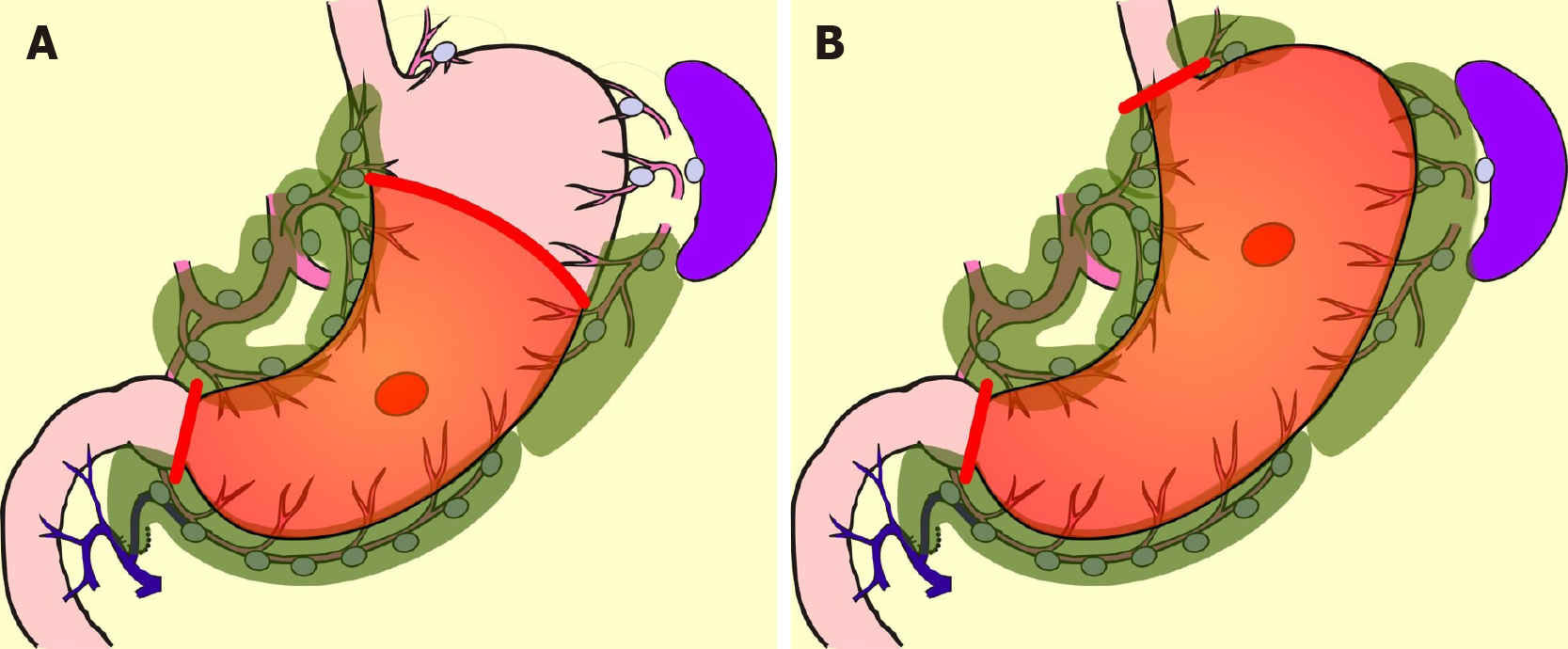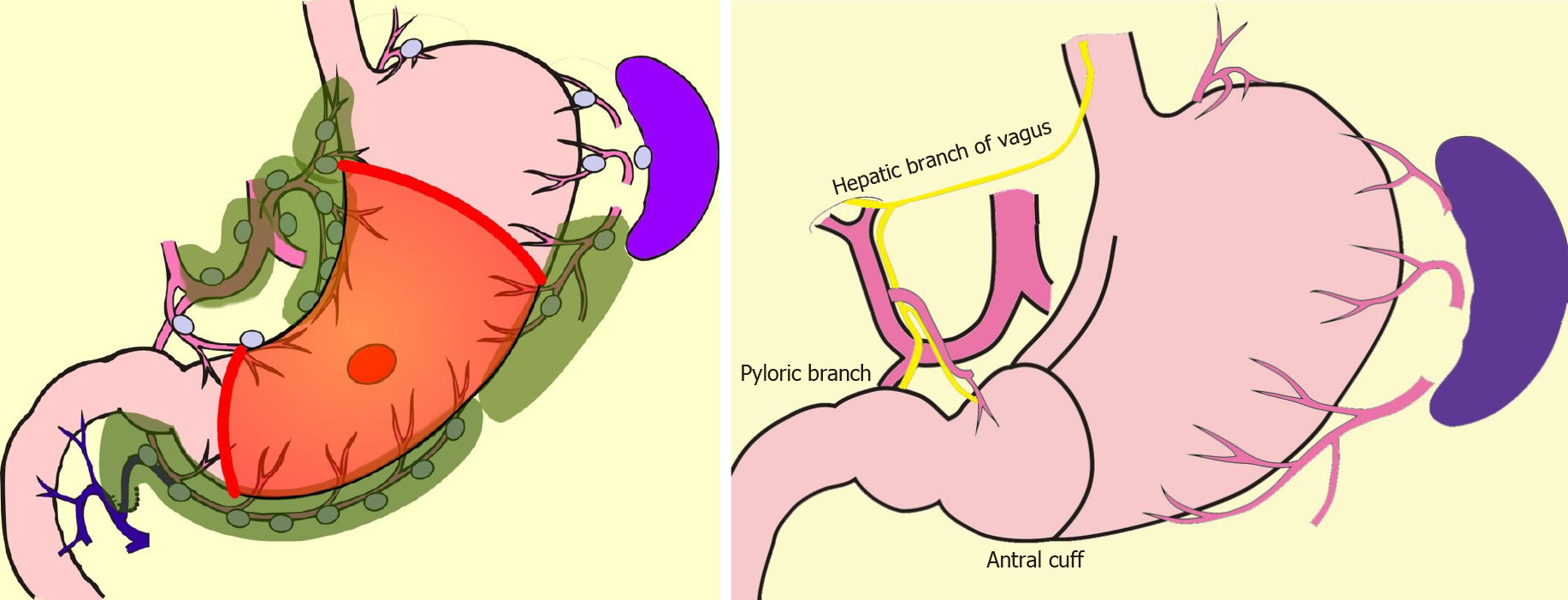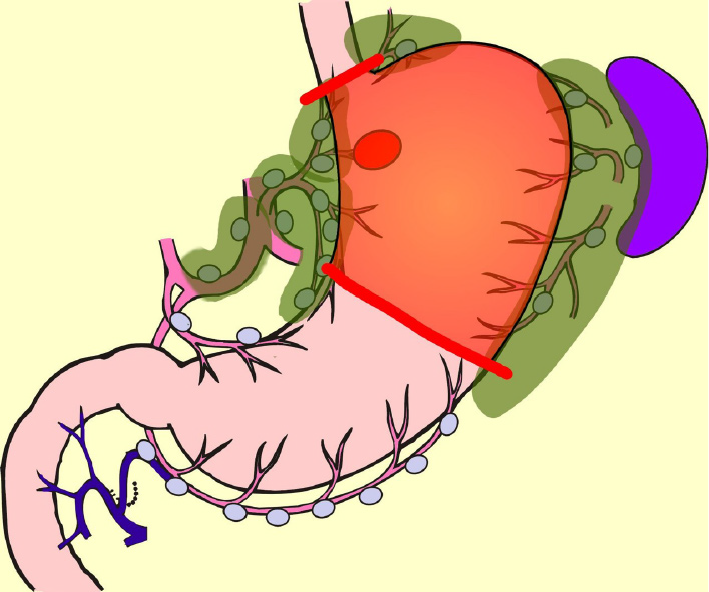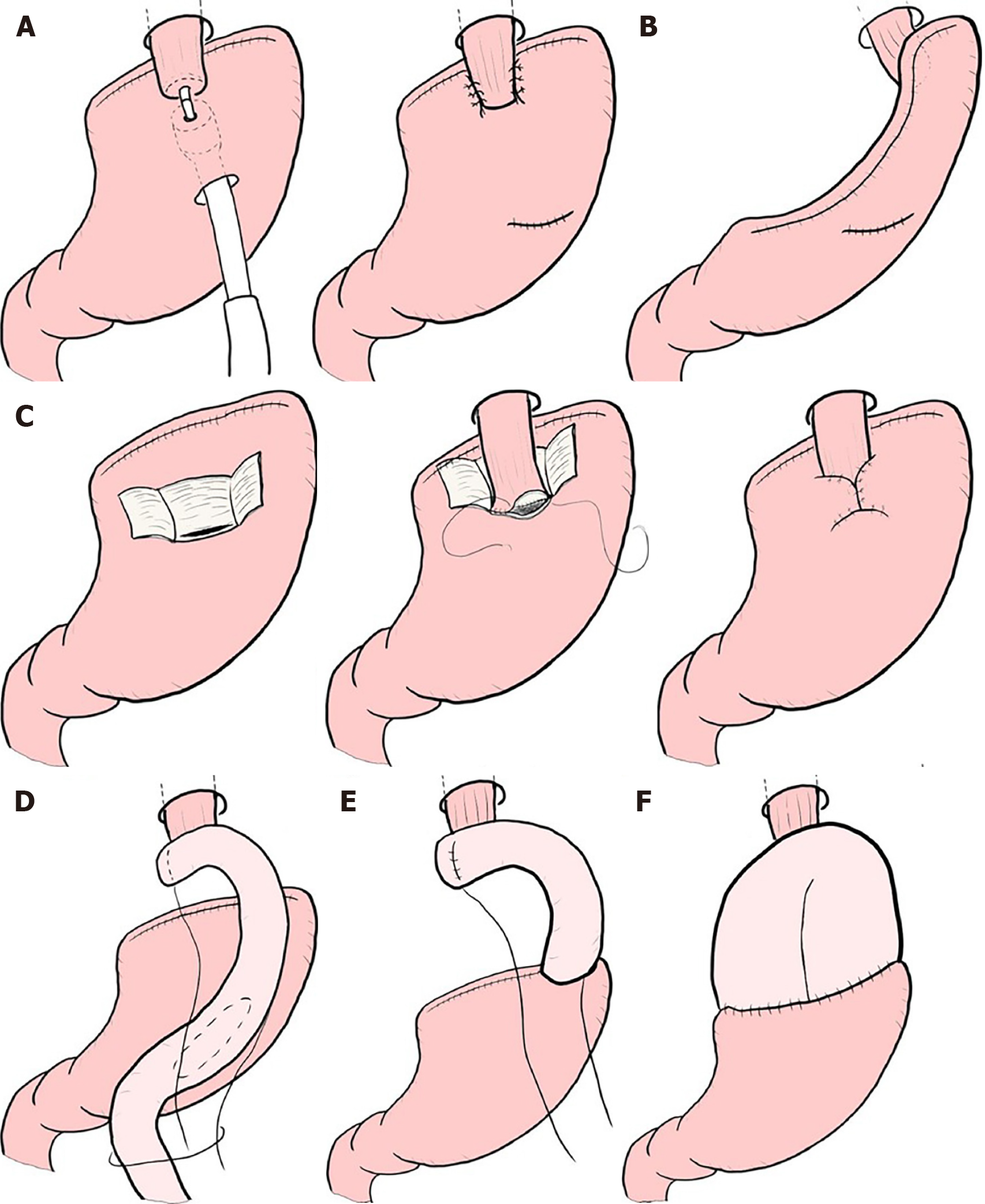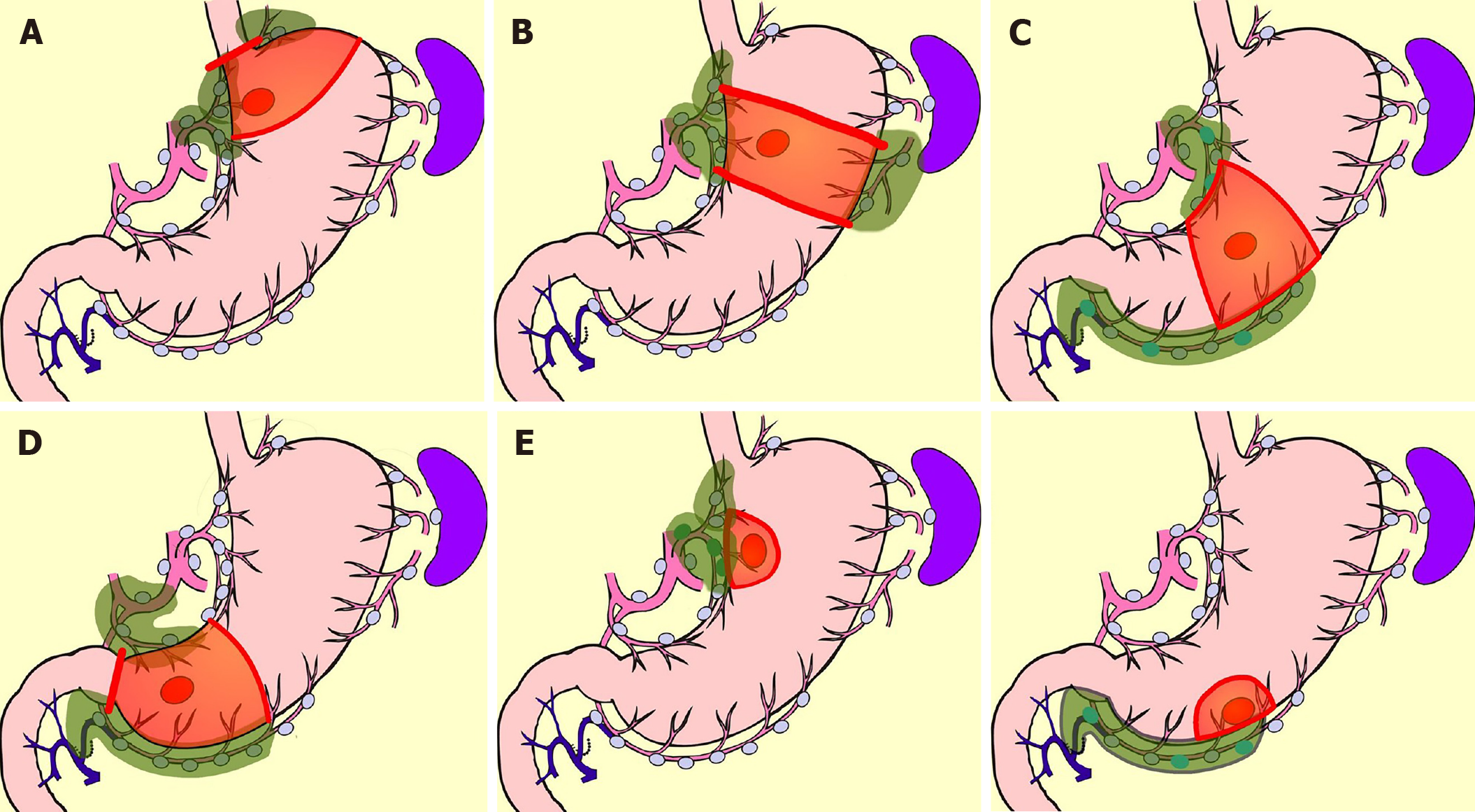Copyright
©The Author(s) 2019.
World J Gastroenterol. Apr 14, 2019; 25(14): 1640-1652
Published online Apr 14, 2019. doi: 10.3748/wjg.v25.i14.1640
Published online Apr 14, 2019. doi: 10.3748/wjg.v25.i14.1640
Figure 1 Standard surgery for early gastric cancer.
A: Distal partial gastrectomy D1+; B: Total gastrectomy D1+.
Figure 2 Pylorus-preserving gastrectomy D1+.
Figure 3 Proximal gastrectomy D1+.
Figure 4 Reconstruction after proximal gastrectomy.
A: Additional anti-reflux procedures for esophagogastric anastomosis; B: Gastric tube reconstruction; C: Double-flap technique (Kamikawa method); D: Double tract reconstruction; E: Jejunal interposition; F: Jejunal pouch interposition.
Figure 5 Function-preserving radical gastrectomy derived by sentinel node biopsy.
A: Mini-proximal gastrectomy; B: High segmental gastrectomy; C: Segmental gastrectomy; D: Mini-distal gastrectomy; E: Local resection of stomach.
- Citation: Kinami S, Nakamura N, Tomita Y, Miyata T, Fujita H, Ueda N, Kosaka T. Precision surgical approach with lymph-node dissection in early gastric cancer. World J Gastroenterol 2019; 25(14): 1640-1652
- URL: https://www.wjgnet.com/1007-9327/full/v25/i14/1640.htm
- DOI: https://dx.doi.org/10.3748/wjg.v25.i14.1640









